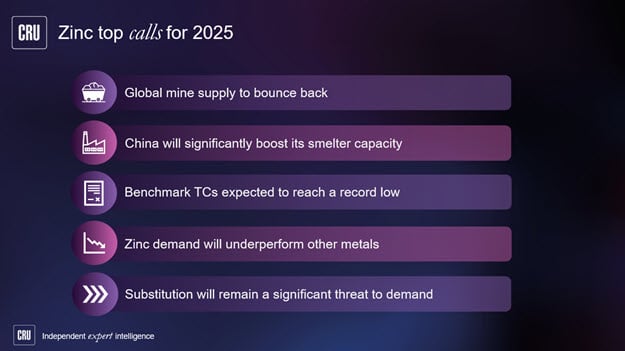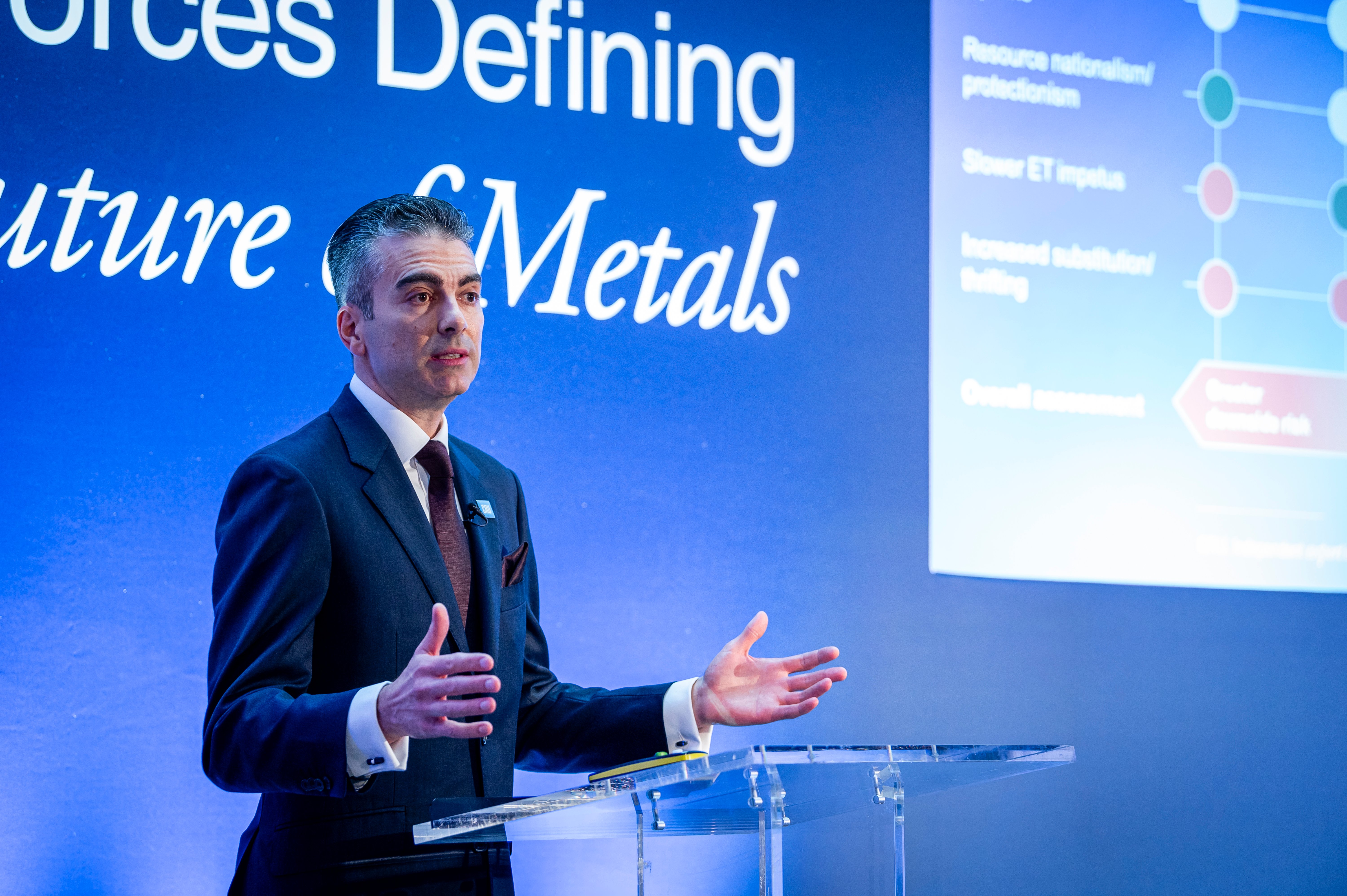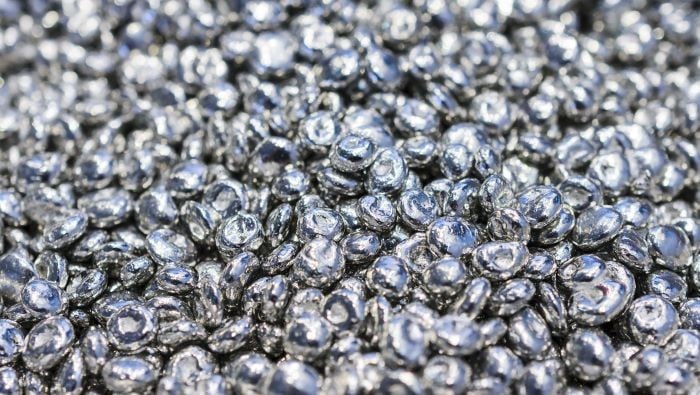With many new projects and expansions anticipated over the forecast period, zinc mining capacity in Inner Mongolia is expected to continue to increase by 11% (124 kt/y) to 1,246 kt by 2022.
Despite being the largest zinc mining province in China, this rate of growth is considerably lower than we expected previously. In this insight, we explore further industry changes over the forecast period taking into account smelting capacity growth which is set to outpace that of mine supply growth.
Location of Inner Mongolia
Inner Mongolia zinc concentrate output is characterised by significant seasonal variations, with many local mines stopping production in the winter months when temperatures can reach -40 degrees in the northern regions of Inner Mongolia. The bulk of zinc concentrate produced by Inner Mongolian based mines are supplied to local zinc smelters or smelters in the northern Chinese market.
Key features of the Inner Mongolian zinc mining market
The Chinese Mineral Resources annual report suggests that China’s total zinc Reserves were 149.85 Mt in 2015, with 28.33 Mt (18.9%) located within Inner Mongolia. Exploration in Inner Mongolia only took off strongly after 2000, much later than Hunan, Yunnan, Shaanxi and Gansu. Most of the zinc deposits are in Chifeng, Bayannaoer, Hulunbeier and Xilinguolemeng.
With large investment coming into the Inner Mongolian market in recent years, local zinc mining production has grown at 8.0% p.a. over the past ten years. The output accounted for 28% of the total production in China in 2017, up from 18% in 2008. Today, there are at least 66 lead-zinc mining operations in Inner Mongolia. Ten deposits are large, 13 deposits are middle-sized and over around 40 the lead-zinc deposits are small scale. There is already a high degree of production concentration, with 27 mines producing more than 10,000 t/y and contributing 745,000 tonnes in total (66% of the province total) in 2017. In 2018, we expect that 32 mines’ output will reach over 10,000 t/y, contributing 845,000 tonnes in total (72% of the province total).
There are several advantages for developers within or looking to enter the Inner Mongolian zinc mining market.
- The scale of most of the zinc deposits is larger than in other provinces, which attracts larger companies to the area.
- The area of Inner Mongolia is large and the population low, which means i) the cost for obtaining the land-use rights for project construction and tailing dams are lower than other provinces and ii) the permitting process is generally faster.
- With the local economy still in the early stages of development, the cost of labour is relatively favourable. However with a low population density and the remote working environment, there can be difficulties sourcing adequate skilled labour. Additionally, smelters are relatively far from the zinc consumption centers and trading areas.
- Most mining companies can benefit from discounted enterprise income tax 15% (effective 2011-2020), compared to a 25% rate for most mining companies in other provinces. The policy aims to attract more investment into the region to develop the local economy.
- While local zinc ore grades range between 3-4%, the favourable cost and tax regime make it possible for relatively profitable extraction in Inner Mongolia.
Around half of Chinese listed zinc mining companies have zinc mines in Inner Mongolia, including Zijin, Shengda, Shengtun, Jianxin, Xingye, NFC, Shandong Gold, Yintai, West Mining and Chihong. With strong financial support, most local major zinc mines have more advanced facilities and management and already satisfy the required levels of environmental and production safety standards, such that the environmental inspections in 2017 had limited impact on production.
Data: CRU
Zinc smelting capacity continues to grow and is expected to outpace mining capacity growth
While mining capacity has greatly exceeded smelting capacity in Inner Mongolia over the past five years, we expect gains in smelting capacity will outpace those of mining over the forecast period.
Data: CRU
We expect that the excess supply of zinc in concentrate will drive increased zinc smelting capacity growth in Inner Mongolia.
- The local zinc smelters are generally well-supplied, with zinc TCs about RMB300-500/t higher than smelters in other provinces from Q2 to Q4 during the year. In Q1, when many local mines are out of production due to the cold weather, TCs tend to drop to almost the same level as other provinces.
- Local zinc smelting capacity is expected to increase by 200,000 t/y in Inner Mongolia during 2017-2022, but 100,000 t/y of this gain is expected to come from the Fusai secondary zinc smelter.
- Many zinc smelters in the surrounding provinces, namely Gansu, Shaanxi, Henan and Liaoning (with total zinc smelting capacity of around 1.9 Mt/y), often purchase zinc concentrate from Inner Mongolia. This typically leads to intense competition in the local zinc concentrate market, pushing down domestic TCs in these provinces
- With around 290,000 t/y zinc smelting capacity expected to be added in the nearby provinces in the coming five years, there may start to be a fundamental shift in the concentrate market in this region. The zinc smelters in Shaanxi, Gansu, Henan and Liaoning provinces will likely have to purchase more feeds from other provinces or increase import volumes in the coming years.
New limits on zinc/lead mining and smelting
The Inner Mongolian government recently released a report highlighting the negative impact of several industries in 43 ecological zones, encompassing forests, grasslands and desert, and covering around 80% of the total area of the province. Among the 43 key ecological zones, new zinc/lead mining projects have been banned in eight areas and new smelting or expansion projects have been banned in 11 areas. In addition, the minimum capacity of any new projects in 13 of the areas has been set at 2,000 t/d throughput and 30,000 t/y production.
We understand that the new policy will have limited impact on the zinc mining and smelting capacity in Inner Mongolia in the coming five years as there are relatively few zinc deposits in the banned areas. A more likely outcome is therefore that the policy will result in production concentrating further in certain areas in the future. Furthermore, the new policy will not apply to those projects which have already obtained exploration rights, or projects that have received EIA approval but have not started construction. One such example is Xing’an Copper & Zinc in Xiwuzhumuqinqi, where we don’t expect the new policy will impact its expansion project.
Data: Inner Mongolia Government website

















